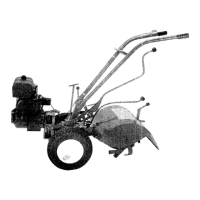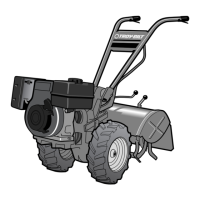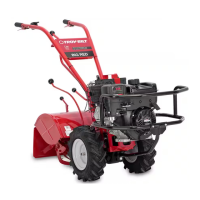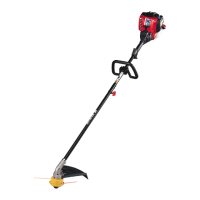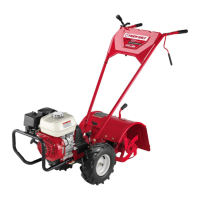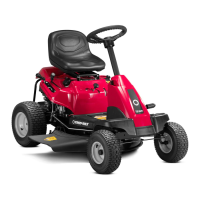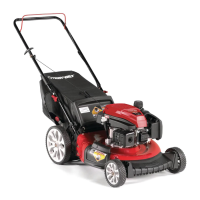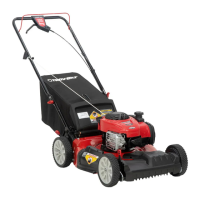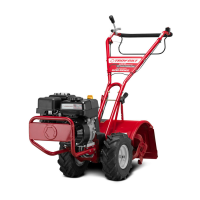UNIFORM TILLING DEPTH
Your
tiller
will
not
leave large
clumps
intact
in
your
garden, if the soil is
dry
(but
will
if
the soil is very wet). It
won't
porpoise along
tilling
at uneven depths,
first
deep, then shal-
low if you
don't
try
to
go
too
deep in
too
few
passes. With the depth
control
lever,
uniform
tilling
depth can be adjusted instantly. You
have a selection
of
any
of
eight
positions
to
choose. The
tiller
leaves a perfectly smooth
and finely tilled path.
BUILDUP OF ORGANIC MATTER
The secret
of
gardening success has always
been
chopping
and
mixing
into
your
soil all
of
the
organic
matter
you
can get. See Photo
5/25. Nature has been recycling and
adding
organic matter (any tissue living
or
once
alive)
to the soil
for
millions
of
years. The natural
cycle is completed when
things
grow
out
of
the
soil by tapping soil nutrients, flourish, die,
return to the earth's surface
to
decompose
with the help
of
earthworms
and
other
soil
life, and then release
nutrients
back
into
the
soil
as
a fresh
supply
of
transplant food.
Many gardeners
overlook
these simple
natural cycles that have been taking place all
about them all the time.
Although
chemical
fertilizers can release
enormous
quantities
of
nutrients at one time,
they
don't
add to the
soil's
ability
to
avoid
compaction
and retain
moisture.
On
the
other
hand,
organic
matter acts
as
a
natural fertilizer, helps make valuable humus,
and actually creates rich new
top
soil when
fully decomposed. It does
other
important
things for the soil, such
as
retaining moisture,
breaking
up
hard clay, and making soil more
friable and improving air
circulation.
EARTHWORMS CAN HELP YOUR SOIL
Crops
grow
poorly
on
compact
soil.
To
pro-
duce
bountiful
crops, soil needs a su
pply
of
moisture, adequate
air
spaces in the soil
for
development
of
roots, and availability
of
nutrients.
The worms' passageways also provide the
airspaces needed
for
root
development in what
was formerly
compact
soil and
they
provide
oxygen
for
other
soil life. Earthworms
them-
selves require both
organic
debris and mineral
(Photo 5/26)
Knee-high
cover
crop
of
buckwheat
tilled
into
the
soil
adds
large
amounts
of
valuable
organic
matter.
(Photo 5/27)
After
harvest,
tilling
under
the
crop
residue
adds
nutrients
to the soil.
(Photo 5/28) Leaves
contain
trace
min-
erals
that
the tree's
roots
draw
up
from
deep
down
in the soil.
To
release these
minerals
and
other
nutrients,
till
them
into
soil.
67
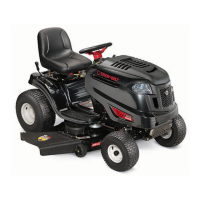
